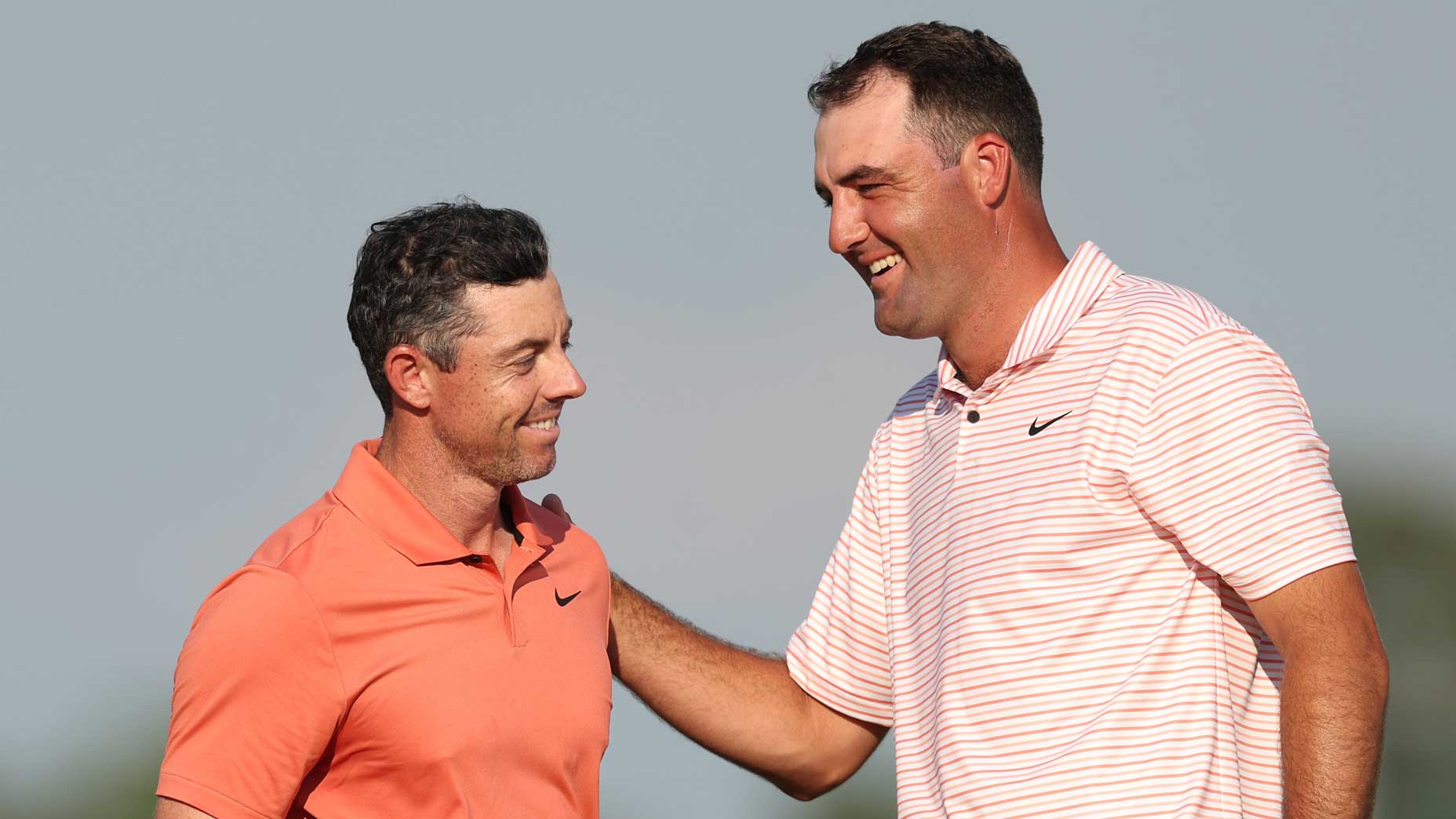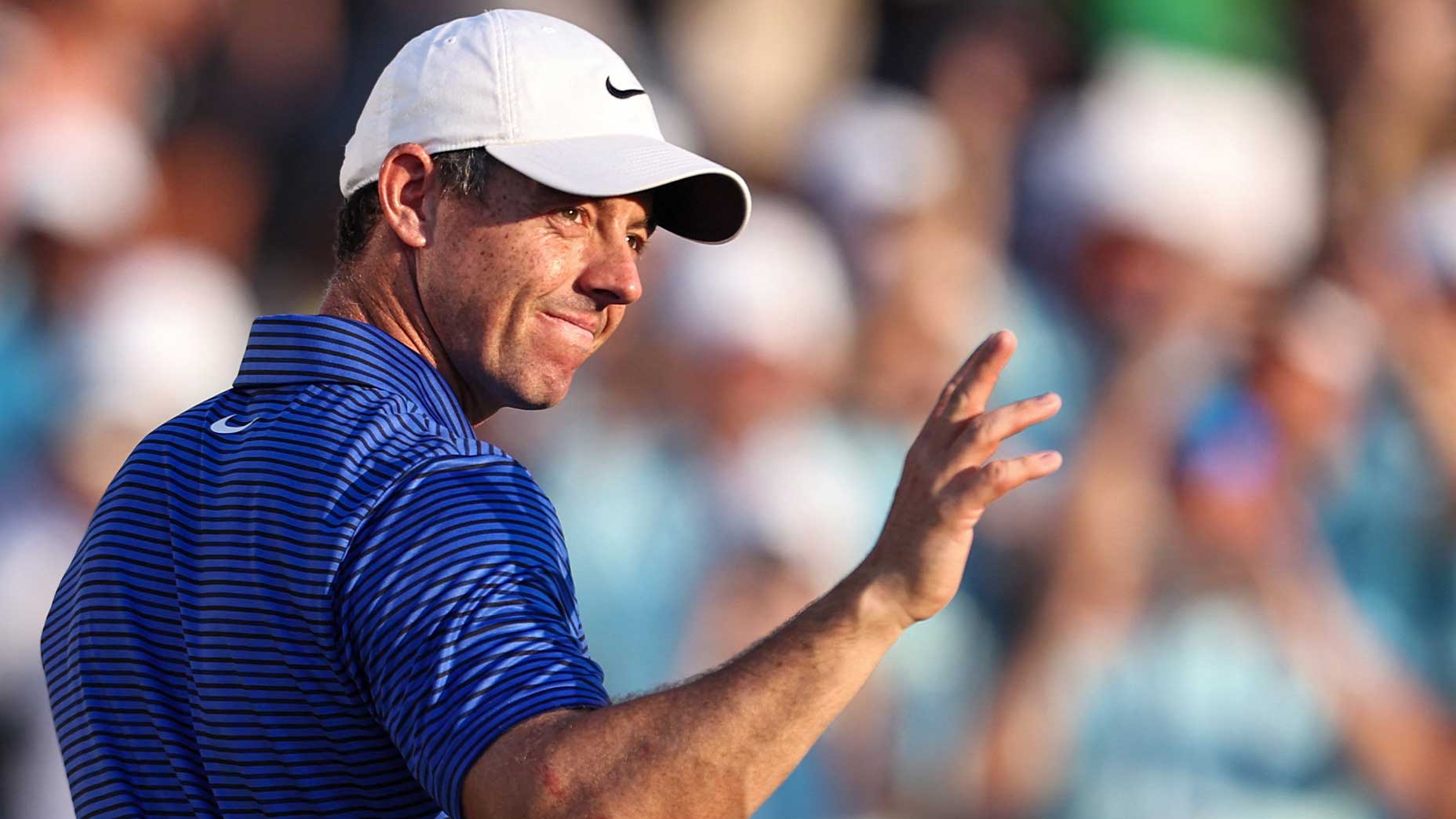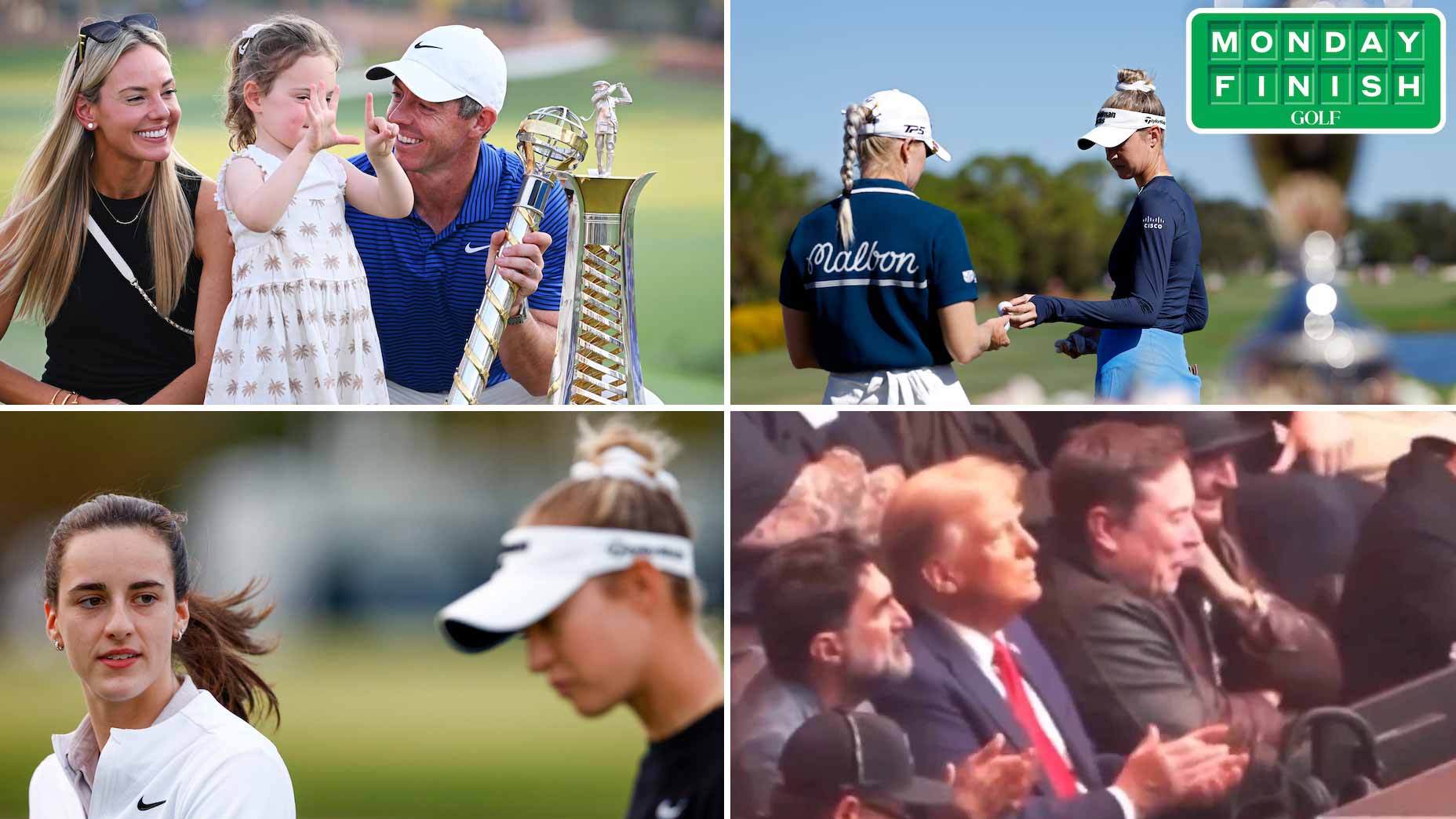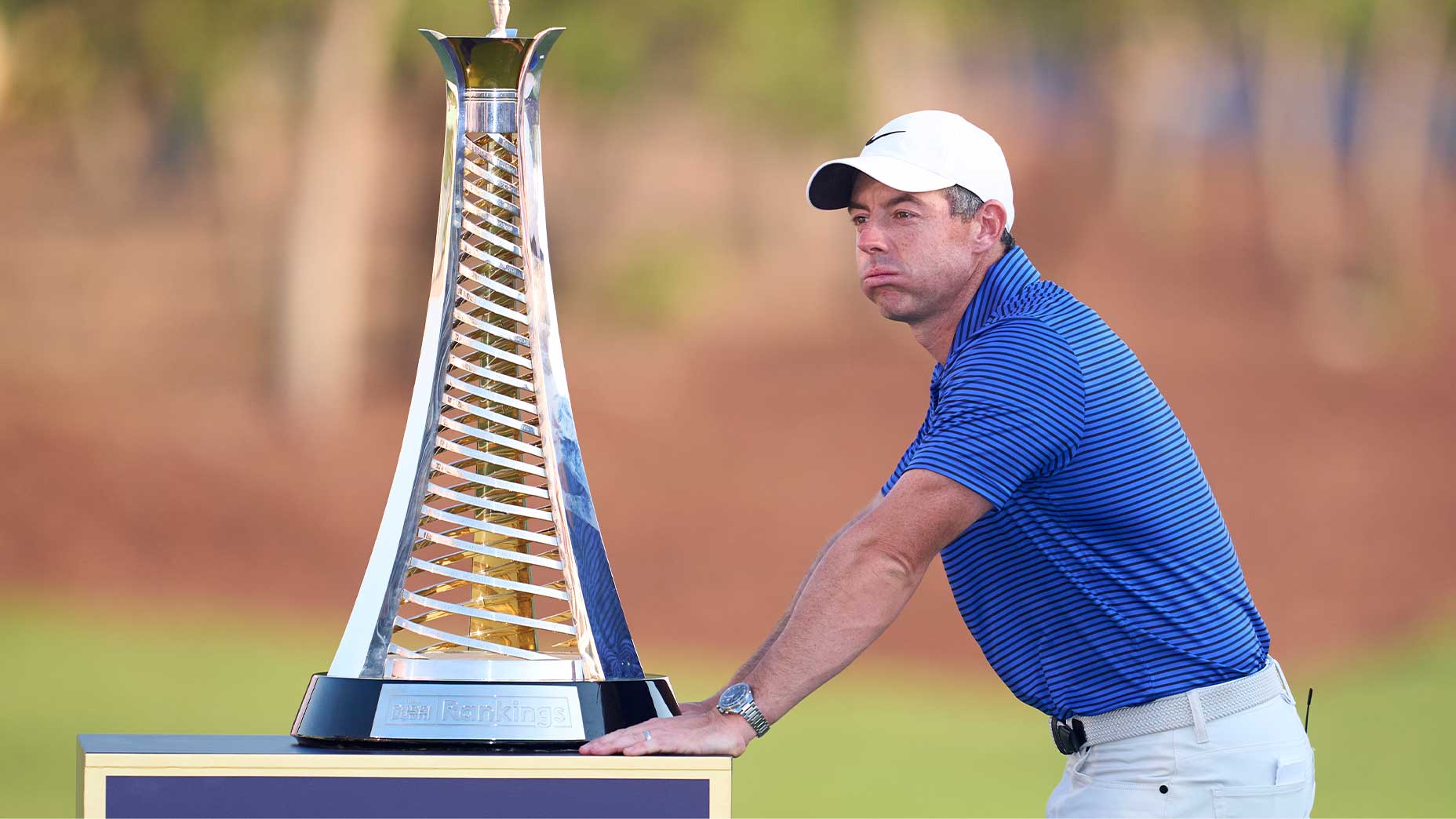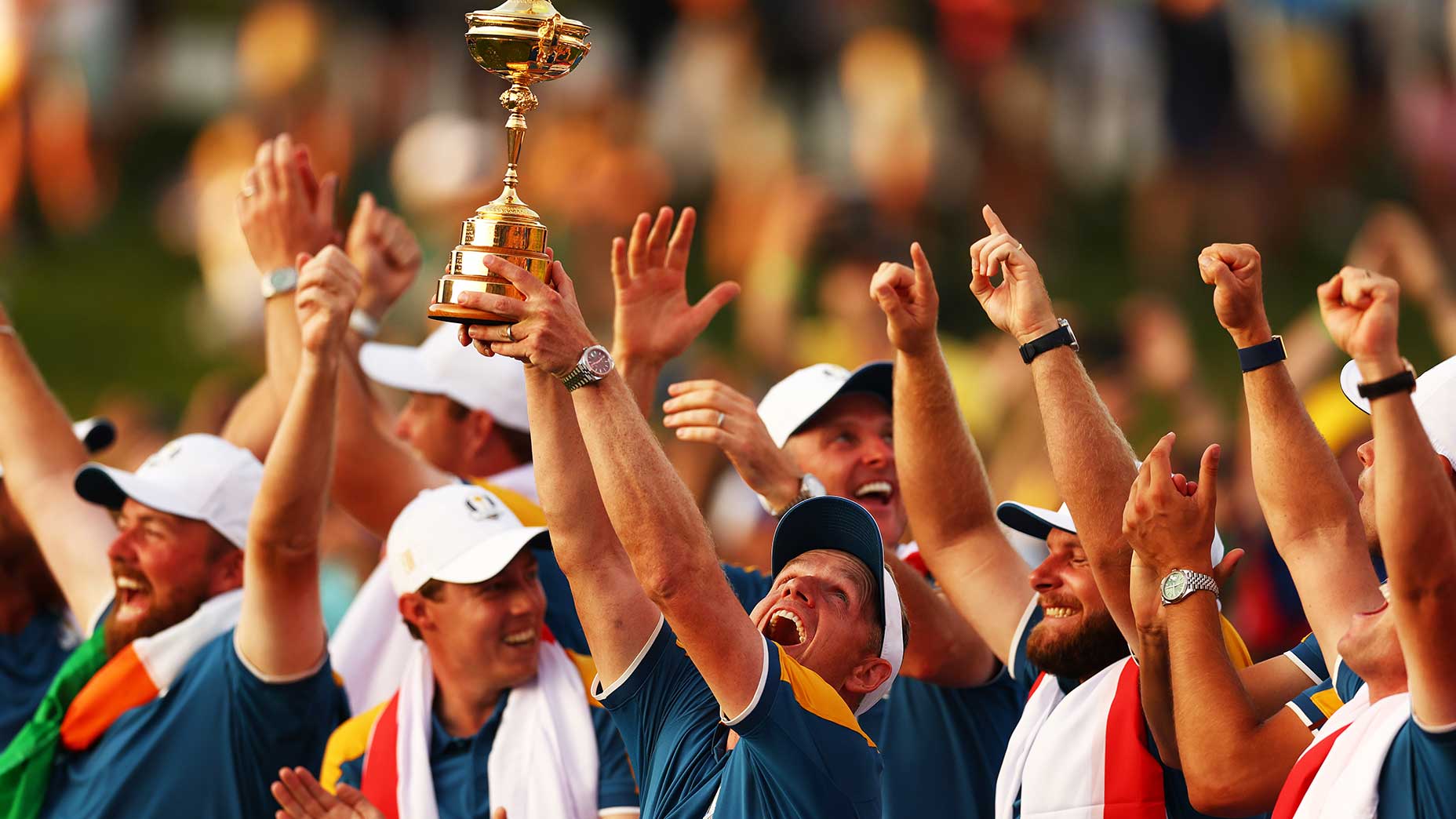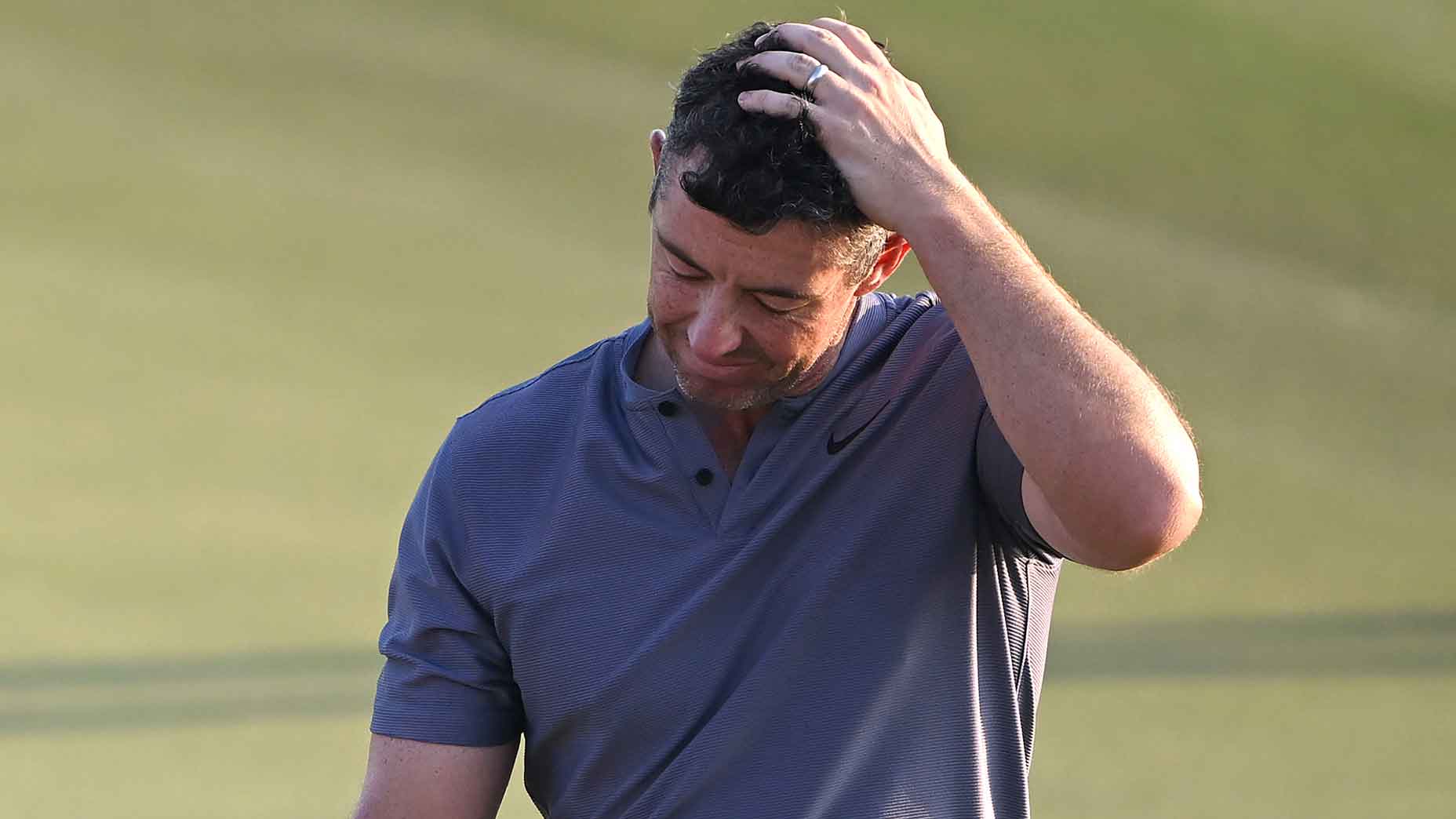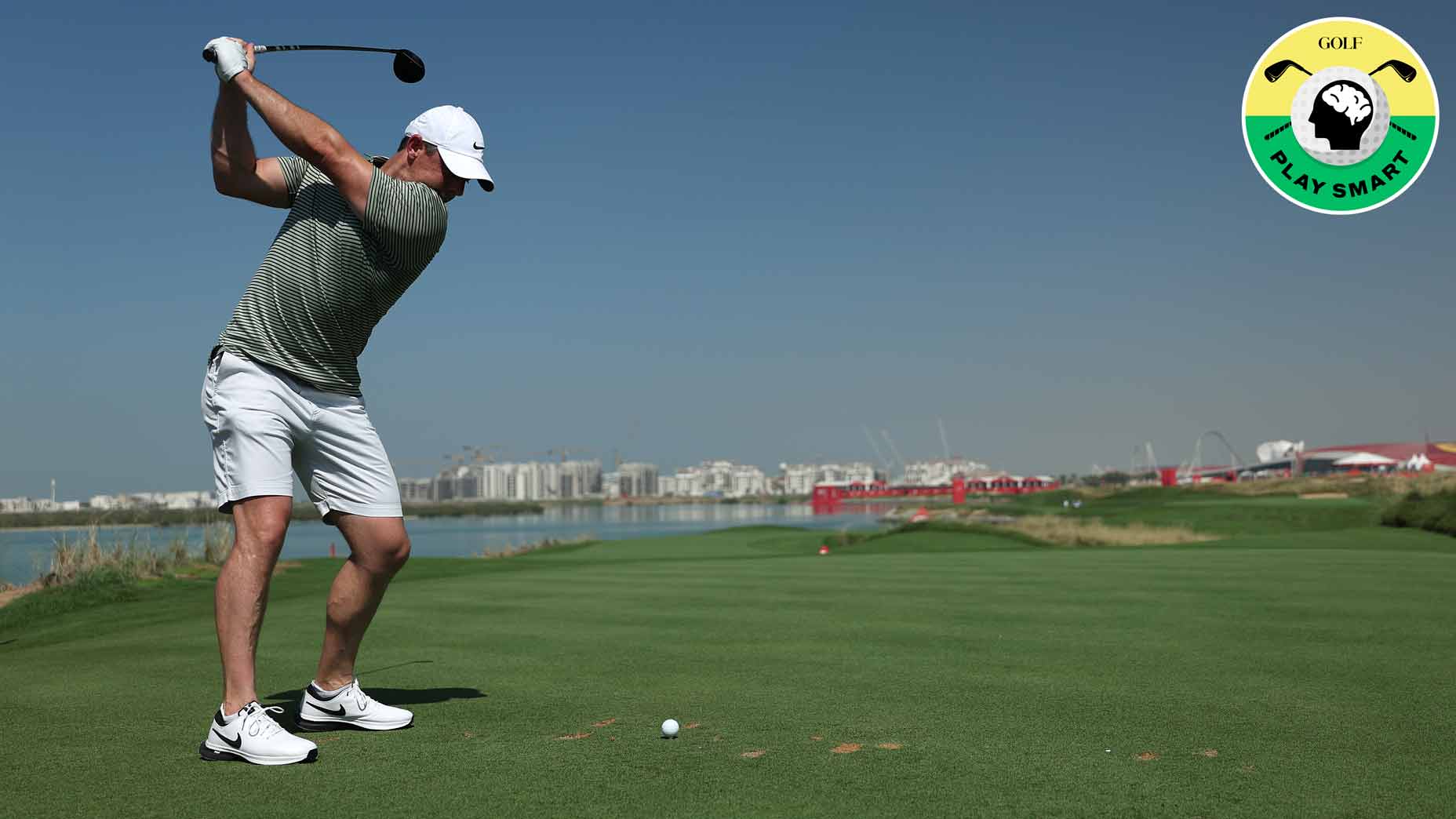Rory McIlroy defends himself after ‘blind spot’ ruling
- Share on Facebook
- Share on Twitter
- Share by Email
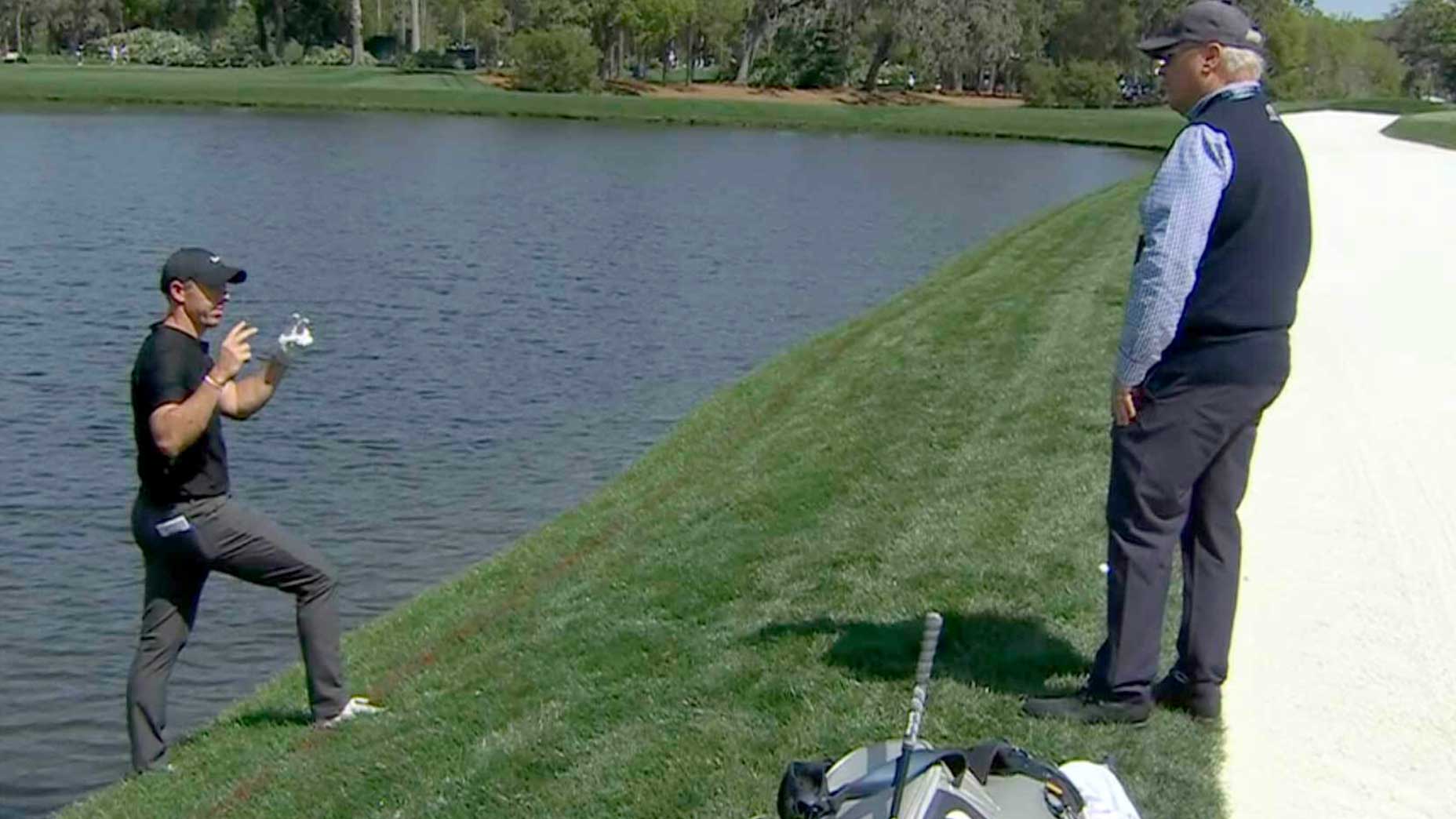
Rory McIlroy explains his drop to a rules official during the first round of the Players Championship Thursday.
ESPN+
PONTE VEDRA BEACH, Fla. — When Pete Dye created TPC Sawgrass, his intentions were clear: he wanted to test the best golfers in the world; to make them squirm internally while they battled inside the ropes. On Thursday at the Players Championship, he absolutely did. Just in a way we couldn’t have imagined.
One of the dominant stories from Day 1 at TPC Sawgrass is how three top players handled the Rules of Golf. Rory McIlroy hit multiple tee shots into water hazards — one on the 18th and another, later, on the 7th — and each time held a significant discussion with his playing partners, Jordan Spieth and Viktor Hovland, about where he should take a penalty drop.
This scene plays out across PGA Tour events all year long. But when it involves a marquee grouping of the game’s biggest stars, it gets heightened attention. Hence why it has been circling around in Internet circles all day, and why McIlroy was eventually asked eight questions about it afterward, asserting he absolutely followed the rules in both situations.
First, to the moment at hand.
McIlroy’s tee ball found the sliver of turf — maybe 15 feet wide — that rests between the long winding bunker and the water up the left side of the 7th hole before it bounced off that sidehill and into the water. The question was not if McIlroy’s ball found land — that much was clear — it was if his ball had crossed the red, painted line and into play, an extra 80 or 90 yards closer to the hole. If it didn’t cross that line, which was just a foot or so away from the water’s edge, then it’s a completely different drop.
By the time McIlroy, Spieth and Hovland reached their respective tee shots, there was a bit of uncertainty about where the ball last crossed into play. Harry Diamond, McIlroy’s caddie, said the ball absolutely covered the hazard line initially, maybe 150 yards from the tee. But what about where they were standing? TV cameras were not situated in an advantageous place to capture the bank of turf on which the ball bounced. It may be 2024, but we don’t have blimp cameras tracking every tee shot from above.
McIlroy made his drop, just inside the bunker, before Spieth and Hovland stepped in. Hovland was first, saying “I don’t know for sure that it crossed the line.” McIlroy disagreed, saying, “I’m pretty comfortable I saw it above the red line.”
Rory McIlroy, Jordan Spieth and Viktor Hovland discuss McIlroy's drop on No. 7.
— PGA TOUR (@PGATOUR) March 14, 2024
Rory makes double bogey to move from solo leader to T2. pic.twitter.com/dkV6a5Q22W
“I thought it was really close,” Hovland replied. “I can’t say either way. There’s no other pictures of it. I thought it was very speculative because it was very close.” All three agreed that it bounced, but again, did it bounce in play or from within the penalty line?
McIlroy continued to say he was “pretty comfortable” that it did land as he perceived it. Spieth said he didn’t have his eyes trained on the proper landing spot, but wanted to warn McIlroy of some fresh perspectives he was hearing. “Yeah, everyone that I’m hearing that had eyes on it — which again is not what matters — is saying they’re 100 percent certain it landed below the line,” Spieth said. By that, Spieth was acting accordingly. It’s good to hear someone else’s view, but those people were TV production staffers who were watching it with their eyes, from across the fairway.
Regardless of what was communicated by others, the rules are upheld by the players and what they deem is correct. Caddies chime in with their thoughts when, and if, they are asked. But it’s the players who protect the field with their decisions. A rules official arrived, but no further evidence came along with him. Slo-motion TV cameras didn’t provide any help. McIlroy dropped plenty back of where he believed his ball crossed, emphasizing to the official that he was “being safe.” He played upward from there, making double bogey, a stain on what was a fabulous 65 (and tie for the lead).
All of that was captured on the broadcast. But what did the individuals think 40 minutes later when they finished their rounds? That was only answered in part.
Hovland and Spieth both exited the scorer’s room first, beelining off without adding any clarity to the situation. Neither shot a particularly impressive round, which is often the standard for bringing players in for comment. McIlroy exited scoring a few minutes later, did a pair of TV interviews and then explained his side of the story to a few dozen reporters.
“I think Jordan was just trying to make sure that I was doing the right thing,” McIlroy said. “I mean, I was pretty sure that my ball had crossed where I was sort of dropping it.
“It’s so hard, right, because there was no TV evidence. I was adamant. But I think, again, he was just trying to make sure that I was going to do the right thing. If anything, I was being conservative with it. I think at the end of the day we’re all trying to protect ourselves, protect the field, as well. I wouldn’t say it was needless. I think he was just trying to make sure that what happened was the right thing.”
McIlroy has been involved with rulings in the past in the same way many players have been. There was the incorrect ruling he was given by a USGA official last summer at the U.S. Open. There was a volunteer that stepped on his ball at the Farmers Insurance Open, leading to embedded ball relief. Then there was the lie he received at the 2020 PGA Championship, after an announcer stepped on his ball — a lie he made more difficult because he felt the original lie was further down in the rough. McIlroy prides himself on following the Rules of Golf and admitted Thursday he was once again trying to do the right thing. The landing area was, in his words, “a bit of a blind spot. I think the best view was from the tee, which was the view we had.”
“I guess I started to doubt myself a little bit,” he added. “I was like, OK, did I actually see what I thought I saw? But I mean, as long as — I was comfortable, and I was just making sure that Jordan and Viktor were comfortable, too.”
Any tee ball that lands hundreds of yards away can leave even a full party of people guessing. McIlroy had his story. Spieth said he didn’t really see it well. Hovland had good eyes on it, he thought, but still wasn’t sure. This kind of thing happens in pro golf often. The path forward is some agreement among the bunch, led by the player at hand, then a signed scorecard and everyone moving on.
“I feel like I’m one of the most conscientious golfers out here, so if I feel like I’ve done something wrong, it’ll play on my conscience for the rest of the tournament,” McIlroy said, putting a bit of a bow on the situation. “I’m a big believer in karma, and if you do something wrong, I feel like it’s going to come around and bite you at some point.”
Latest In News

Sean Zak
Golf.com Editor
Sean Zak is a writer at GOLF Magazine and just published his first book, which follows his travels in Scotland during the most pivotal summer in the game’s history.

